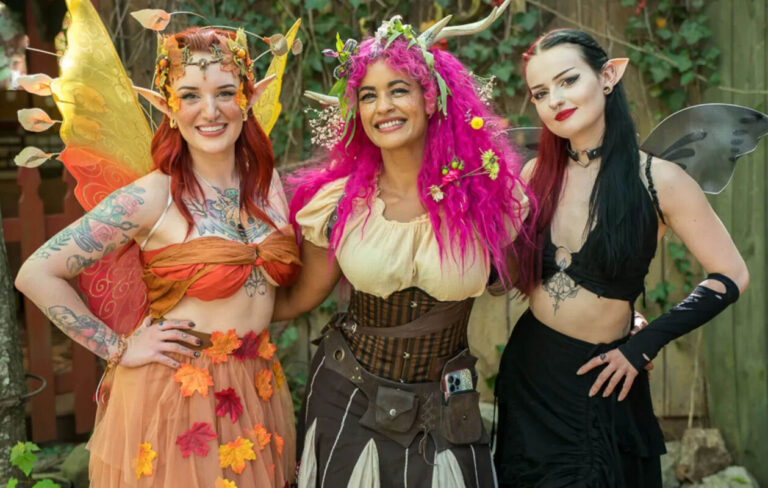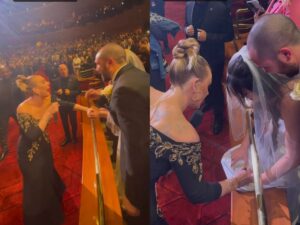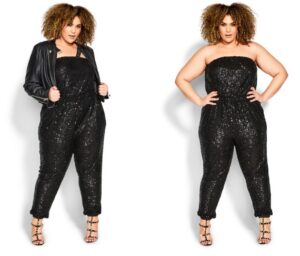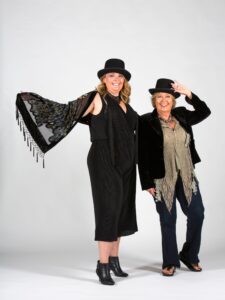To attend Medieval Times, wear medieval-style clothing for an authentic and immersive experience. Step back in time and experience the captivating world of the Middle Ages at Medieval Times.
Combining thrilling jousting tournaments, majestic horses, and a medieval feast, this unique dinner show transports guests to an era long gone. To fully immerse yourself in the atmosphere and enhance your experience, dressing in medieval-style clothing is highly recommended. From knights and princesses to court jesters and peasants, there are numerous options to suit every taste and budget.
Whether you choose to rent or purchase your attire, dressing up adds an extra touch of fun and helps create lasting memories. So, put on your best medieval outfit and get ready to embark on an adventure like no other at Medieval Times.
Dress Code At Medieval Times
What to Wear to Medieval Times
At Medieval Times, the dress code is an essential part of the experience. To fully immerse yourself in the medieval era, proper attire is highly recommended. By understanding the importance of dressing appropriately, you can better appreciate and embrace the spirit of the Renaissance.
To truly appreciate the atmosphere and historical context, it is crucial to don clothing that reflects the time period. Opt for garments that evoke a medieval aesthetic, such as flowing robes, tunics, and elaborate headdresses.
Embracing the spirit of the Renaissance means embracing the opulence and grandeur of the time. Rich fabrics, vibrant colors, and intricate details are all essential elements of medieval attire. To fully participate in the experience, consider accessories like jewelry, capes, and corsets.
Remember, the dress code at Medieval Times is not mandatory, but it greatly enhances the overall experience. By dressing appropriately, you not only honor the historical context but also contribute to the immersive atmosphere. So, put on your medieval best and prepare to be transported to a world of chivalry and adventure!
Key Elements Of Medieval Fashion
Medieval fashion was characterized by rich fabrics and luxurious materials. Nobles and royalty wore garments made from expensive materials such as velvet, silk, and brocade, adorned with intricate embroidery and beading. These intricate details and embellishments showcased wealth and status and were often handcrafted by skilled artisans.
In terms of style, medieval fashion featured dramatic silhouettes and voluminous attire. Women wore long, flowing dresses with fitted bodices and wide sleeves, while men sported tunics, doublets, and robes. Both genders often wore layers of clothing, including undershirts, chemises, and accessories like belts and capes.
Accessories played a crucial role in completing the medieval look. Women adorned themselves with elaborate headdresses, veils, and jewelry, while men wore hats, caps, and belts. Footwear also reflected the time period, with pointed-toe shoes and boots being common.
Overall, Medieval fashion combined opulence, attention to detail, and exaggerated silhouettes to create a distinctive and memorable style. It remains an enduring source of inspiration for costume designers, reenactors, and lovers of historical fashion.
Women’s Fashion: Authentic And Elegant
Women’s fashion in medieval times was known for its authentic and elegant style. Gowns and dresses were the go-to choices for a regal and sophisticated look. These garments were made from luxurious fabrics such as velvet, silk, and brocade, often adorned with intricate embroidery and beading.
Layering techniques played a crucial role in creating a visually appealing ensemble. Multiple layers of clothing, such as chemises, corsets, and bodices, were worn to achieve the desired silhouette. Undergarments like hoops and farthingales were used to give skirts a voluminous and structured shape. This layering technique not only added depth to the outfit but also symbolized wealth and status.
Accessories were an essential part of medieval fashion. Women adorned themselves with jewelry made of precious metals, gemstones, and pearls. Belts were used to cinch the waist and add a touch of elegance. Headpieces like crowns, veils, and elaborate headdresses were worn to complete the regal look.
Men’s Fashion: Embodying Chivalry And Nobility
Men’s Fashion: Embodying Chivalry and Nobility
For a polished appearance at Medieval Times, consider wearing tunics, doublets, and jerkins. These garments not only represent the spirit of the era but also give a distinctive and authentic look. To elevate your style further, choose the right color and fabric that reflects your character. Additionally, styling your facial hair can add an extra touch of medieval charm. Whether you prefer a rugged beard or a well-groomed mustache, keep it well-trimmed for a refined appearance. In terms of footwear, opt for leather boots that offer comfort and durability while complementing your outfit. Don’t forget to accessorize with a belt, a statement necklace, or a brooch to complete your noble ensemble.
Navigating Medieval Fashion For Modern Times
What to Wear to Medieval Times
Navigating Medieval Fashion for Modern Times
Incorporating the essence of medieval fashion into your wardrobe can be a fun and unique way to express your personal style. Adapting medieval trends to contemporary fashion allows you to create looks that are both fashion-forward and timeless. Instead of replicating exact outfits from the medieval era, consider incorporating medieval-inspired elements into your everyday outfits. To achieve this, you can experiment with bold accessories such as intricate metal jewelry, statement belts, and ornate headpieces. Mix and match modern pieces with medieval-inspired garments like flowy dresses with lace-up details or tailored coats with faux fur accents. For casual events or themed parties, consider fashion-forward alternatives to full medieval ensembles. Opt for simple and elegant dresses or blouses with billowy sleeves, paired with high-waisted skirts or pants. Finally, complete the look with leather or suede boots, and don’t forget to experiment with braided hairstyles or loose curls to add a touch of medieval charm.

Credit: www.pinterest.com
Diy: Creating Medieval-inspired Costumes
To create a DIY medieval-inspired costume, it’s important to pay attention to the details that will give your outfit an authentic and unique look. Start by sourcing fabrics and materials that reflect the medieval era, such as rich velvet, brocade, or linen. These fabrics can be found at local fabric stores or online suppliers. To sew your costume, you’ll need to learn a few basic techniques and patterns for different garments. This may include skills like hand sewing, embroidery, or using a sewing machine. There are many online tutorials and resources available to guide you through the process. Finally, don’t forget to add personal touches to your costume to make it your own. Consider adding accessories like belts, jewelry, or even hand-dyed accents to enhance your outfit and create a truly unique look.
Dressing For Medieval Times Events And Festivals
Dressing for Medieval Times Events and Festivals
For Renaissance fairs and historical reenactments, finding the perfect outfit is essential. To embrace the medieval aesthetic, consider these outfit inspirations:
| Men | Women |
|---|---|
| Doublet and hose | Bodices and gowns |
| Tunics and breeches | Chemises and skirts |
| Cloaks and hats | Veils and headdresses |
To stay comfortable during long events, choose breathable fabrics like linen and cotton. Layer your clothing, allowing for easy adjustments depending on the weather. Comfortable footwear, such as leather boots or sandals, is also important.
When attending themed events, follow proper etiquette and guidelines. Respect the historical context and stay in character. Be mindful of the event rules regarding modern accessories and technology. Keep the atmosphere authentic by avoiding anachronistic items and using period-appropriate terms of address.
By carefully selecting your medieval outfit, staying comfortable, and adhering to event guidelines, you can fully immerse yourself in the enchanting world of Renaissance fairs and historical reenactments.
Exploring Medieval Accessories And Accents
htmlExplore the fascinating world of medieval fashion with statement belts, pouches, and satchels, offering both practicality and style. These accessories not only complete your ensemble but also provide a convenient way to carry essential items. Caps, hats, and headdresses play a crucial role in enhancing the authenticity of medieval attire. They not only protect you from the elements but also add a touch of sophistication to your overall look. To further elevate your outfit, consider wearing brooches, badges, and pins. These small details serve as symbols of status and identity, allowing you to showcase your personality and position within the medieval society. Incorporating these accessories and accents into your outfit will transport you back in time and create an unforgettable experience at Medieval Times.
Conclusion: Embrace The Renaissance Lifestyle
In order to fully embrace the Renaissance lifestyle at Medieval Times, it is important to reflect on the elegance and grandeur of medieval fashion. Encouraging the preservation of historical attire is a key aspect of immersing oneself in this unique experience. By donning clothing inspired by the Renaissance era, you can transport yourself back in time and truly feel like a part of that historic period. The transformative power of dressing in Renaissance style allows you to step into the shoes of those who lived during the medieval times and gain a deeper understanding of their lives. Whether it’s a flowing gown, a regal cloak, or intricate accessories, the attire you choose to wear to Medieval Times can greatly enhance the enjoyment of this immersive event.
Frequently Asked Questions On What To Wear To Medieval Times
Are You Supposed To Dress Up For Medieval Times?
Yes, you can dress up for Medieval Times, but it’s not required. However, many visitors choose to wear medieval-themed costumes to enhance their experience.
What Should You Wear At Medieval Times?
Wear casual attire for Medieval Times. There’s no dress code, but costumes or medieval-themed clothing are encouraged for fun. Dress comfortably and prepare for a lively evening, full of entertainment and feasting. Enjoy immersive experiences of knights, jousting, and medieval festivities in a relaxed and fun atmosphere.
Is Medieval Times Worth It For Adults?
Yes, Medieval Times is worth it for adults. The entertaining live shows, immersive medieval experience, and delicious food make it a unique and enjoyable outing for adults. There is something for everyone, from jousting tournaments to majestic horsemanship. Adults will have a memorable and fun-filled experience at Medieval Times.
How Does Seating Work At Medieval Times?
Medieval Times seating is allocated based on your reservation. You’ll be seated in a section designated for your chosen package, which determines your view of the arena and proximity to the action. After checking in, an attendant will guide you to your assigned seats.
Conclusion
To wrap it up, selecting the right outfit for a visit to Medieval Times is essential to fully immerse yourself in the experience. Whether you choose to dress as a knight, a noblewoman, or a peasant, remember to prioritize comfort and authenticity.
With these tips in mind, you’ll be sure to look the part and feel like you’ve stepped back in time at Medieval Times. So, don’t forget to dress up and enjoy the spectacle!





